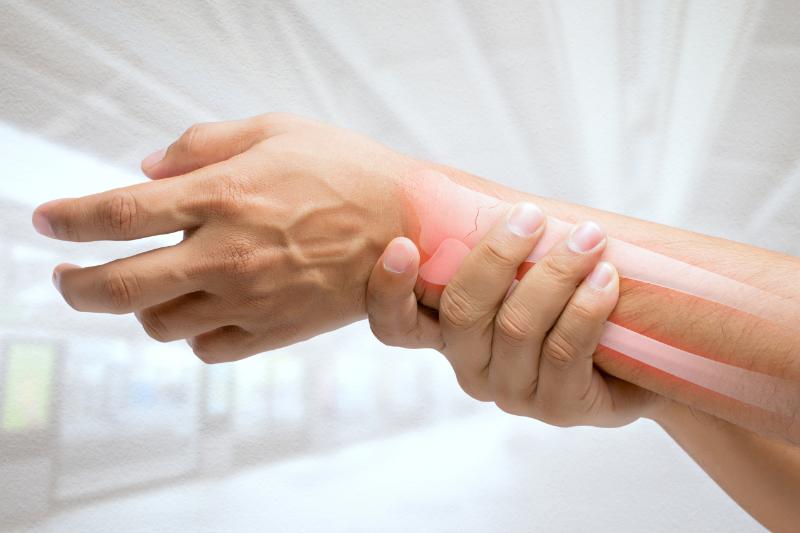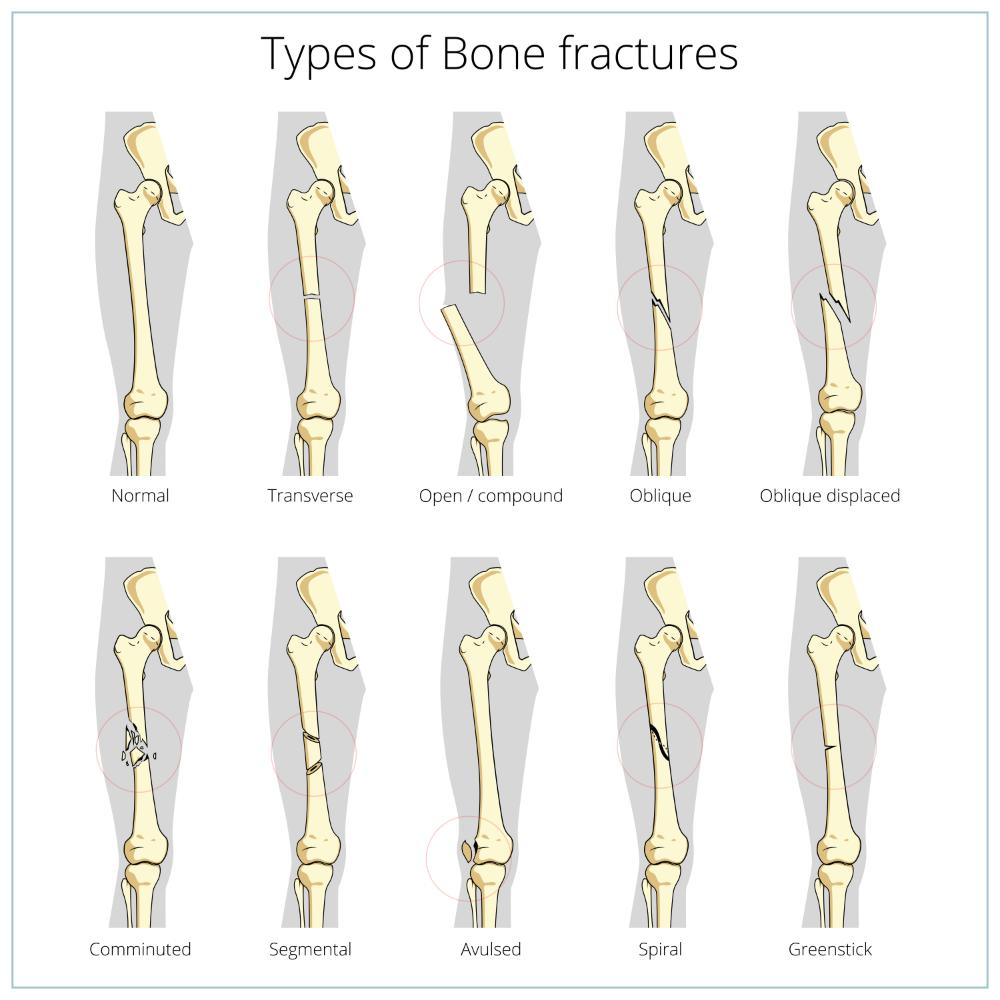Fractures are common injuries that can occur at home, during sports activities, or in the workplace. The word "fracture" is the clinical term for a broken bone, and they vary in severity from hairline cracks to compound fractures where the broken bones may penetrate the skin.
Fractures of the ankle, foot, hand, hip, knee, shoulder, or wrist are the most common instances of the injury.
At Kimball Health Services, our dynamic orthopedic team of Dr. Jeffrey T. MacMillan and Karen Wenner, APRN, DNP, along with our primary care team, treat ailments and trauma affecting muscles, ligaments, bones, and joints.
The leading causes of bone fractures include:
- Trauma: Falls, motor vehicle accidents, and or sports-related tackles.
- Osteoporosis: A medical condition that weakens bones, making them more susceptible to breaks.
- Overuse: Repetitive motion that causes muscle fatigue and increased force on the bone, leading to fractures, such as stress fractures in athletes.
Common symptoms of fractures include:
- A snap or grinding sound during the injury.
- Swelling, redness, and bruising around the injured area.
- Intense pain at the time of injury.
- Worsening pain with movement or touch.
- Difficulty supporting weight with the injured area.
- Visible deformity or bone protrusion through the skin.
Types of fracture are based on how the bone breaks:
- Comminuted Fractures: Serious fractures where bones break into several fragments.
- Greenstick Fractures: This occurs when bones bend instead of breaking. It is common in children.
- Oblique Fractures: Breaks that are curved or at an angle.
- Open, Compound Fractures: Bones pierce the skin.
- Pathologic Fractures: This occurs when weakened bones break due to diseases like osteoporosis.
- Stable Fractures: Broken ends that align with minimal displacement.
- Stress Fractures: Hairline fractures or small cracks or slivers in the bone.
- Transverse Fractures: Breaks occurring at a 90-degree angle to the long axis.
Fractures are typically diagnosed using X-rays. Treatment options usually depend on the severity of the injury.
Treatment options for hairline fractures usually involve using the Rest, Elevate, Ice, and Reduce technique. Nonsteroidal anti-inflammatory drugs (NSAIDs) may be prescribed to help manage pain.
Treatment options for more involved fractures can include:
- Plaster or fiberglass casts keep broken ends immobile and in the correct position.
- Functional casts or braces that allow limited joint movement.
- Traction with a gentle pull to align bones.
Risk factors like diabetes, anemia, age, and tobacco use may delay healing.
Surgery is recommended in complex fractures where bones don't heal correctly using a cast or splint. Surgical intervention may also be advised for compound fractures and fractures affecting joints, like those in the wrist and ankle.
Surgery may involve two procedures: External Fixation and Open Reduction and Internal Fixation (ORIF).
External Fixation
For cases where the skin and soft tissue near the fracture are severely damaged, an external fixator may be needed until the surgery. For this, metal pins or screws are inserted above and below the fracture site. The pins are then connected to a metal bar outside the skin.
This device functions as a stabilizing frame, ensuring that the bones stay in position during the healing process.
Open Reduction and Internal Fixation (ORIF)
During this procedure, bone fragments are repositioned to their normal alignment, and then special screws or metal plates are affixed to the outer surface of the bone to secure the pieces in place.
Ensure you keep your bone stable to ensure a healthy blood supply and eat a balanced diet to provide nutrition to your body and encourage healing.
Recovery after a fracture usually takes 6 to 12 weeks for adults, but children tend to heal faster. Once your cast is removed, physical therapy may be recommended to help restore muscle strength and flexibility.
Our expert orthopedic team at Kimball Health Services provides compassionate and expert care to help you heal after a fracture. We're committed to restoring your mobility and well-being with cutting-edge treatments and physical therapy support.
In case of an emergency, call 911 or walk into our emergency department anytime. For appointments, call ahead or fill out our online form. We're here for you whenever you need us.









